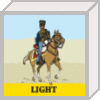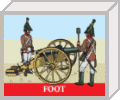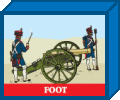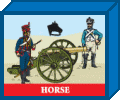Teugen-Hausen - 19 April 1809
Historical Background
Believing the French armies were tied down in Spain, Archduke Charles advanced into Bavaria, intent on destroying the French army. The invasion caught Napoleon by surprise, but Charles’s advance was slow and it gave the Emperor time to react. Davout’s isolated III Corps was marching to link up with the Bavarians, and Charles planned to destroy it first by massing three of his corps against it. As events transpired, on 19 April, Saint-Hilaire’s division encountered elements of a single Austrian Corps around Hausen. Davout immediately ordered an attack on the Austrians that had taken a defensive position on a series of ridges. Although the initial assault failed, reinforcements arrived and the attack was renewed. The Austrians counter attacked the French after they had gained control of the first ridge, but the attack collapsed. More troops were fed into the fight from both sides. The French finally gained the upper hand with the arrival of Friant’s division and the French artillery. The other Austrian corps in the vicinity did not march to the sound of the guns, giving Davout the victory.
The stage is set. The battle lines are drawn and you are in command. Can you change history?
|
|
Set-Up Order
|
Battle Notes
Austrian Army
• Commander: Archduke Charles
• 4 Command Cards
• Optional 3 Tactician Cards![]()
![]()
![]()
![]()
 |
 |
 |
 |
|
| 10 | 2 | 1 | 2 | 3 |
French Army
• Commander: Davout
• 5 Command Cards
• Optional 5 Tactician Cards
• Move First![]()
![]()
![]()
![]()
![]()
![]()
 |
 |
 |
 |
|
| 9 | 3 | 1 | 1 | 4 |
Victory
8 Banners
Special Rules
• The nine hill hexes that make up the first ridge line form a Temporary Majority Group Victory Banner worth 2 banners to the side that occupies an absolute majority at the start of its turn (Temporary Majority Victory Banner Turn Start)
• The six hill hexes that make up the second ridge form a Temporary Majority Group Victory Banner worth 1 banner to the side that occupies an absolute majority at the start of its turn (Temporary Majority Victory Banner Turn Start)
• The village of Teugen is a Permanent Victory Banner Objective worth 2 banners for the Austrian player when an Austrian unit occupies the village at the start of its turn (Permanent Victory Banner Turn Start)

